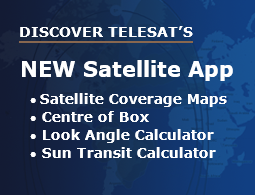In the food industry, there’s a theory that bacon makes everything better. It has actually been tested and “the results were pretty great,” according to Wired magazine.
This optimism for improvement, albeit using technology, is shared by the Defense Advanced Research Projects Agency (DARPA), which recently kicked off the Space-BACN program. The acronym stands for Space-Based Adaptive Communications Node, and the program intends to develop an optical intersatellite link (OISL) that will communicate with multiple commercial satellite systems in Low Earth Orbit (LEO). The Space-BACN terminal will act as the intermediary between commercial and government OISLs.
The goal is to gain the ability to transfer data anywhere on Earth at the highest speed possible and enable “seamless communication between military/government and commercial/civil satellite constellations that currently are unable to talk with each other,” according to the DARPA press release.
One of the parameters is to improve satellite communications. Currently, the OISL data speed standard set by the Space Development Agency (SDA) is 2.5 Gbps. However, private-sector companies are designing systems that go well beyond that. There is some work to be done so that the government can leverage commercial constellations for surge capacity or to offload the SDA transport layer to provide disaggregated capabilities at faster data rates.
Telesat Government Solutions is thrilled to have been chosen by DARPA to participate in the Space-BACN program. Specifically, we have been awarded a contract to identify command-and-control elements that are necessary to support cross-constellation OISL communications. Initially our role is to enable alignment, or seamless connection handshakes, between the government Network Operating Center (NOC) and the Telesat Lightspeed NOC.
In other words, we are working to find a common solution that allows the Space-BACN node to find the right connection points — at the right time in space — to ensure resilient, secure, and long-lasting communications.
We must be mindful that there is a secure domain between commercial and government nodes to ensure there is no contamination. Telesat is building the Telesat Lightspeed LEO constellation to have an umbrella of security and cyber protections that will not only secure connections but also allow for seamless data flows. For example, to operate as a certified, trusted partner, our service is being built to Infrastructure Asset Pre-Assessment (IA-PRE) standards for cybersecurity. In addition, Telesat Lightspeed uses NSA-reviewed, NSA-tested, and NSA-approved, CNSSP-12 compliant cryptologic implementations onboard its satellites and operational ground segment to secure satellite commands and telemetry to the exacting levels required for critical national security missions. And we meet Cybersecurity Maturity Model (CMMC) Level 2 requirements, which focus on reducing the risk of advanced persistent threats.
Clearly, the government recognizes the value of commercial services and innovation. They are to be congratulated for creating the most enduring, flexible, interoperable communications infrastructure and for leveraging commercial partners and systems.
Distribution Statement “A” (Approved for Public Release, Distribution Unlimited)




